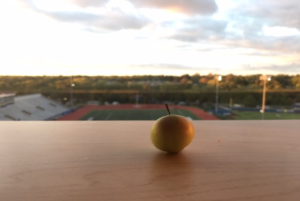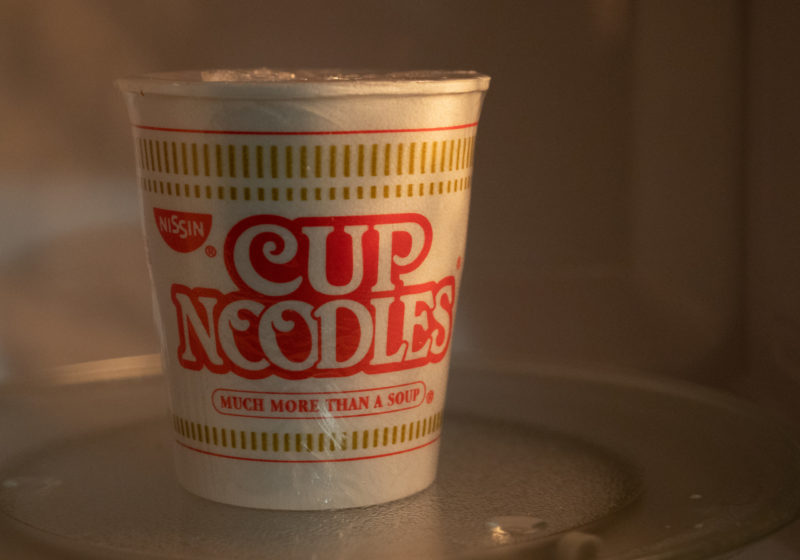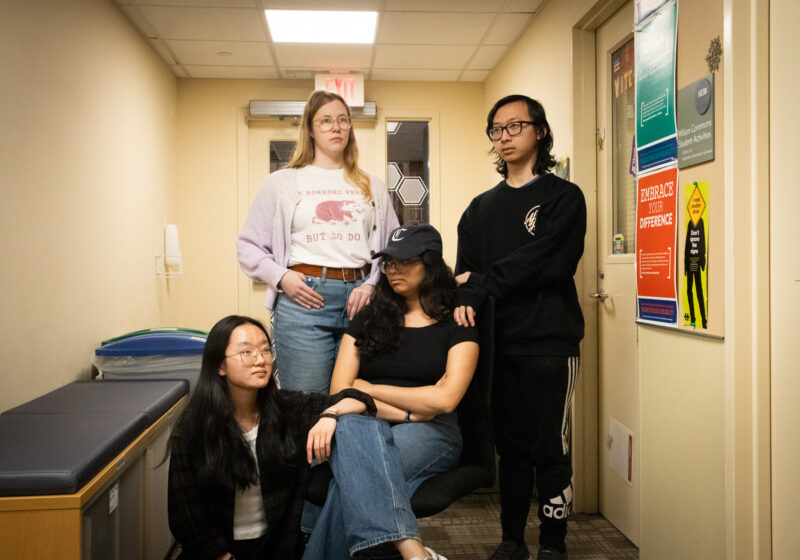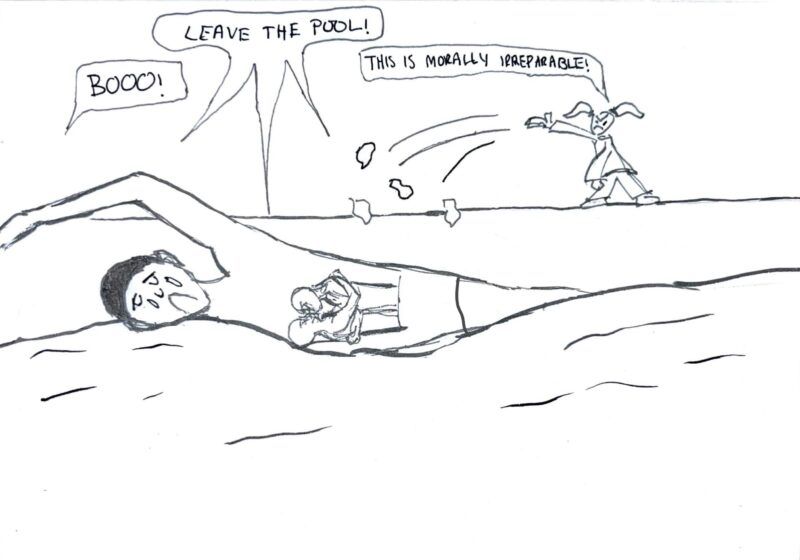It’s a cold winter night. At 2 a.m., you’ve finally finished your chem lab, 6 hours before the deadline. Dining halls are closed, and your last meal was at noon. .
You’re thinking of sleep for dinner, when a hearty aroma wafts in, tantalizing your tastebuds. Your hallmate has just cooked a Maruchan ramen package, and has awakened a hunger for the sodium-packed goodness. But alas! You missed Microwave Basics 101, and will not be able to enjoy a warm, noodley dish tonight.
So … You want to know how to cook ramen. Sure, you know how to press buttons on a microwave. But ramen, like fine art, is all about purpose, beauty, and MSG. To cook it, you must know it.
Let’s start with the definition of “noodle.” According to handspeak.com: “a strip, ring, or tube of pasta or a similar dough, typically made with egg and usually eaten with a sauce or in a soup.”
Each culture has a different version of noodles. For Italians, that might be spaghetti;for Chinese, that might be wheat noodles; for Americans, that might be Italian spaghetti or Chinese wheat noodles.
But one style of noodles has transcended borders: ramen, the Japanese noodle soup that has been processed and packaged to be made available everywhere.
About a year ago, my best friend’s husband’s boyfriend went to Japan. Apparently, he had a girlfriend there and a bunch of extra miles on American Airlines. He had a great time, got to visit a bunch of beautiful places, such as Mount Fuji (which I believe is what the Toblerone bar is modeled after) and Tokyo (which is where much of “Cars 2” is set). Now, I’ve never been to Japan, but I can tell you: The DC Cherry Blossom Festival is a sight to see. Us Americans aren’t going to be out of the country for a while, so that’s about as close to Japan as we can get without talking to that weird kid from high school about anime girl body pillows.
One thing my neighbor’s sister-in-law’s son was really interested in was haikus, which also originate in Japan. Here’s a little example from the great poet Matsuo Basho:
An old silent pond
A frog jumps into the pond
splash! Silence again
The first line of a haiku is 5 syllables, the second line is 7 syllables, and the third line is 5 syllables. Another example I really like:
A world of dew
and within every dewdrop
a world of struggle.
Not entirely sure what that one means, but I really like the energy. Ahh, Japan.
So anyways, when my mother’s girlfriend’s boss’s nephew came back, he was absolutely obsessed with ramen. Understandably so — one can do a lot of things with ramen: You can add an egg, meat, green onions… I’d teach you to make that dish but let’s be honest — Where are you going to find a single, raw egg? Certainly not on campus. Not sure if Hillside would sell you a single egg (they’d probably charge you $3 anyways).
You know, if there were three or four Hillsides that were in competition with each other, I’m sure we would have lower prices. But Hillside is the one location on campus where students can easily purchase packaged food. Just a little example of how monopolies work to negatively impact the consumer. Just some food for thought (haha) the next time you purchase a $9 bag of chips!

*This is a photo of an apple that kind of looks like an egg I got from Hillside. Also taken on my iPhone 6.
The great thing about instant ramen is that it’s super cheap. Like, a dollar for twelve servings type cheap. Unfortunately, Hillside has upped the price to a dollar a serving, in a staggering 1100% markup. That percentage climbs even more if you’re paying with declining, because declining dollars are less than real dollars.
Anyway, let’s say you got this at the dollar store, where it is literally a dime a dozen.
You were able to do that because ramen made of relatively inexpensive materials, is super light and therefore easy to ship, and has a long shelf life. Now, I would be remiss if I didn’t mention the creator of ramen: Momofuku Ando. I would also be remiss if I didn’t mention that he was Taiwanese, and developed the product during the food shortage in Japan in the post-war era. Ando famously said,“Peace will come to the world when all its people have enough to eat.” Which sounds a little threatening, but I don’t think he meant it like that. So cheers to world peace!
A classic bowl of instant ramen has three main ingredients: noodles, water, and salt (the seasoning packet). Speaking of the seasoning packets: Depending on where you are, you can get many different types. There are 13 different flavors, including Chicken, Creamy Chicken, Roast Chicken, Picante Chicken, Beef, and Roast Beef. Please don’t ask me the difference between them.
If you’re a health nut, try the 25% Less Sodium flavor. This packet is made of 3 grams of salt, instead of 4 grams of salt. Additionally, there are 25% fewer carcinogens. However, if you’re not willing to compromise in the carcinogen category, I’d opt for Maggi noodles, which contain 25% more lead and MSG than Maruchan ramen noodles.
I’m personally coming out with my own line of noodles to cater to the subgroup of Americans who are intent on combining all Asian food into one dish. Call it Asian fusion noodles. Here you can get chai tea ramen, sushi ramen, rice ramen, poke ramen, chicken tikka masala ramen, and many more. For those hesitant to try these exotic foods, we also carry spaghetti ramen.
Nevertheless, there’s nothing like a classic bowl of instant noodles. So to stick with the basics, here’s how to make ramen.
How to make ramen:
- Put the noodles and some water in the bowl (doesn’t matter how much)
- Warm it up in the microwave for 3-5 minutes, or 7 minutes.
- Pour in the sauce packet. Stir.
That’s it folks! Bone Appetite! Be sure to share this recipe on Facebook :).






